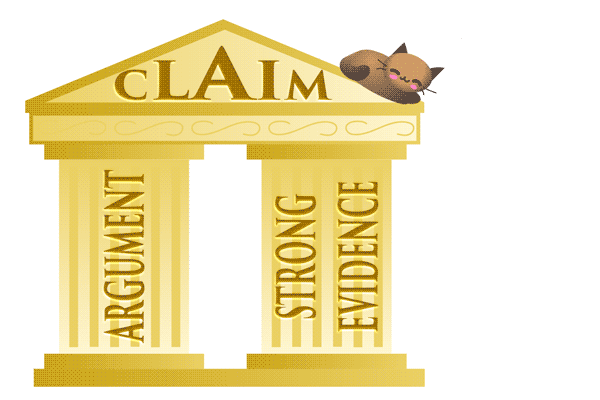Arguments and evidence
A claim, or argument, that is backed up by assumptions makes the claim more believable. However, a claim or argument that is backed up by evidence is much stronger. Quality evidence = fact.

An argument without evidence is weak and your claim will fail.
Strong evidence → modest UBI cost and estimate.
Weak evidence → assumption/anecdotal evidence “I'm yet to meet a proponent of the UBI from a working-class background”.
The example below demonstrates how an essay writer responds to claims made by the author of the article. The essay writer looks critically at the language used, then chooses language (words and phrases) in that text to identify the strengths and weaknesses of that argument. The essay writer will use weak points on which to base their counter arguments.
This essay demonstrates the use of a quote from Dawson’s article along with another quote to support it.
| Example | Language used |
|---|---|
| Dawson (2018:18) claims that a system of UBI would “rob people of agency”, that it ignores the value that work has for people beyond just earning an income. | Sets the mood of the discussion, referring to the UBI and weakening recipients’ control. |
| Whilst Dawson has a point in acknowledging the importance of work to people’s sense of identity, | Deliberate concession to original claim, used to set up a rebuttal. (Counter argument). |
| she fails to mention the freedom that a UBI would give to those whose work does not earn them a decent income. | Counter argument from the essay writer’s perspective (rebuttal). |
| Many who work in areas such as the creative arts, would welcome a regular income to sustain their involvement and work until such time as they are able to sell their work and earn a modest income. | Positive language to introduce an example that supports the essay writer’s rebuttal. |
| Valuing art has always been problematic and although art economists acknowledge the importance of art in society, they struggle to put a value to it (Throsby 1994). Paying an artist a basic wage would allow artists to thrive and contribute to society’s need for art, and allow the artist, through market forces, to augment their income through sales. |
Authoritative evidence (paraphrase with reference) to support the essay writer’s rebuttal. |
Dawson E (5 April 2018) 'Plan for universal basic income ignores the value of work', The Age, accessed 27/09/2022. https://www.theage.com.au/politics/federal/plan-for-universal-basic-inco...
Throsby D (1994) A work-preference model of artist behaviour. In: Peacock A Rizzo I (eds) Cultural Economics And Cultural Policies. Springer, doi:10.1007/978-94-011-1140-9.
